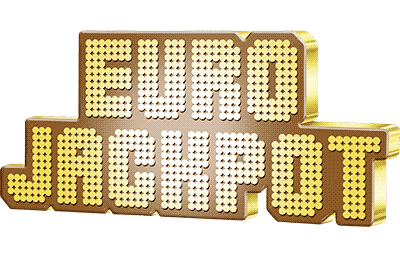
EuroJackpot is a pan-European lottery draw that was launched in 2012 and is sold across 18 participating countries: Croatia, Czech Republic, Denmark, Estonia, Finland, Germany, Hungary, Iceland, Italy, Latvia, Lithuania, Netherlands, Norway, Poland, Slovakia, Slovenia, Spain, Sweden.
EuroJackpot is drawn just once a week on a Friday night in Helsinki, Finland but the draws are worth the wait, as you have the chance to win huge jackpots of up to €90,000,000.
Just like its European counterpart – EuroMillions – EuroJackpot features two draw machines with two separate pools of numbers. You must choose five numbers from the first pool ranging from 1 to 50 and two numbers from the second pool (Euronumbers) ranging from 1 to 10. The aim of the EuroJackpot draw is to match all five of your first selection and both Euronumbers to win the jackpot but this isn’t as easy as it is for other lottery draws, due to longer than average odds.
Pick five main numbers from 1 to 50.
Pick two Euronumbers number from 1 to 10.
Choose the draw day you want to play.
Check the draw results on Fridays.
There are no fixed prizes for any of the EuroJackpot prize tiers. Like SA Lotto and PowerBall, each prize tier is calculated on a pari-mutuel basis, using tickets sales and the number of winners per prize tier to determine the value of each prize.
Even though we cannot say exactly how much you will win per prize pool, as each draw is different, we have included the average payouts per prize tier below, which is calculated using historical data from the EuroJackpot draws.
| Numbers Matched | Average Payouts (€) |
|---|---|
| 5 + 2 Euronumbers | €10-90 million |
| 5 + 1 Euronumber | €250,000-1 million (or more!) |
| 5 | €200-300,000 |
| 4 + 2 Euronumbers | €2-5,000 |
| 4 + 1 Euronumber | €300-500 |
| 4 | €100-200 |
| 3 + 2 Euronumbers | €30-70 |
| 3 + 1 Euronumber | €15-30 |
| 2 + 2 Euronumbers | €15-20 |
| 3 | €10-15 |
| 1 + 2 Euronumbers | €7-10 |
| 2 + 1 Euronumber | €5-8 |
In comparison to many other lottery draws around the world, the chance of winning EuroJackpot’s top prize is above average but not as long as some big draws, coming in just shy of the 60 million to 1 mark. 50% of revenue raised from ticket sales is allocated to the prize fund, keeping it in line with other big draws like EuroMillions.
Like most other lottery draws, EuroJackpot rolls over each draw that it isn’t won, with the potential to climb as high as €90,000,000, which is the jackpot cap. If the jackpot isn’t won at the €90,000,000 mark, the top prize fund is equally distributed to between the winners of the next prize tier.
| Numbers Matched | Odds of Winning | Share Of Prize Pool |
|---|---|---|
| 5 +2 Euronumbers | 1 in 95,344,200 | 36% |
| 5 + 1 Euronumber | 1 in 5,959,013 | 8.5% |
| 5 | 1 in 3,405,150 | 3% |
| 4 + 2 Euronumbers | 1 in 423,752 | 1% |
| 4 + 1 Euronumber | 1 in 26,485 | 0.9% |
| 4 | 1 in 15,134 | 0.7% |
| 3 + 2 Euronumbers | 1 in 9,631 | 0.6% |
| 3 + 1 Euronumber | 1 in 672 | 3.1% |
| 2 + 2 Euronumbers | 1 in 602 | 3% |
| 3 | 1 in 344 | 4.3% |
| 1 + 2 Euronumbers | 1 in 128 | 7.8% |
| 2 + 1 Euronumber | 1 in 42 | 19.10% |
To win the EuroJackpot top prize you must match all five main lottery balls and the two Euronumbers against all seven numbers on your ticket. However, there are 12 prize tiers in total, with prize being awarded from matching as few as two main lottery balls and 1 Euronumber.
Rollovers are quite common in the EuroJackpot, with just one jackpot winner every 4 – 6 draws on average. This means that jackpot can climb in value at a brisk pace. The jackpot starts in value at €10,000,000 but it can be as high as €40,000,000 or more in just a couple of months.